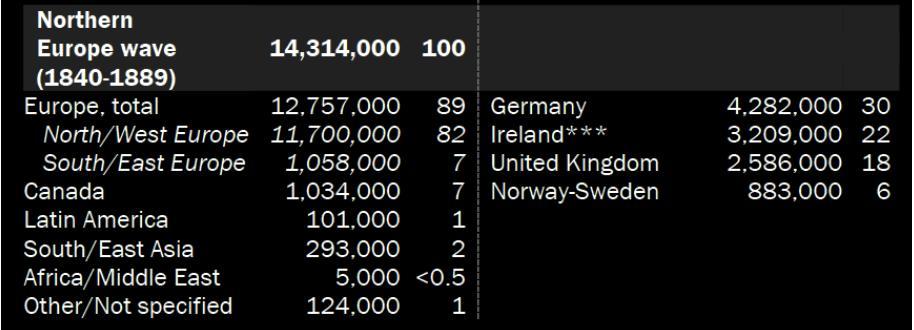The United States is home to nearly a fifth of the world’s international immigrants, according to a recent Pew Research Center report. The foreign-born population in the United States reached a record 47.8 million in 2023, an increase of 1.6 million from the previous year. This represents the largest annual increase in more than 20 years.
Who are the key actors?
Click here to connect with us on WhatsApp
According to the report, updated September 27, Mexico, China and India are among the top birthplaces of immigrants residing in the United States. “Immigrants today make up 14.3% of the US population, a sharp increase from 4.7% in 1970,” the report states. This is the highest percentage since 1910, although still below the peak of 14.8% in 1890.
The increase in the foreign-born population can be attributed to changes in immigration laws. In 1965, the United States Congress made changes that allowed a broader influx of immigrants from Asia and Latin America, accelerating growth that had previously been dominated by European migration.
“These legislative changes, particularly the Immigration and Nationality Act of 1965, significantly diversified the sources of immigration,” the report highlights.
Where are the immigrants from?
While Mexico remains the largest country of origin, with 10.6 million Mexicans living in the United States, immigrants from India represent 6%, followed by China with 5%. In terms of regional distribution, Asian immigrants now represent 28% of the total immigrant population, while Latin America (excluding Mexico) contributes 27%.
“In recent decades, we have seen a marked shift in countries of origin, especially after 1965,” said Jeffrey S. Passel, one of the report’s lead researchers.
Before the legislative changes of 1965, American immigration law favored northern and western Europeans. This all changed after 1965, when the United States opened its doors to more immigrants from Asia and Latin America. Between 1840 and 1889, 90% of immigrants came from Europe. Today, that figure has dropped to around 12%, with immigration from regions like Asia and Latin America leading the way.
In recent years, immigration from Mexico has slowed, and the country’s share of the US immigrant population fell from 29% in 2010 to 23% in 2022. Meanwhile, Indian immigration has been on the rise, with 145,000 people migrating from India to the United States. only in 2022.


Legal status of American immigrants
Most immigrants to the United States live there legally, according to Pew findings. Starting in 2022:
49% were naturalized US citizens.
24% were legal permanent residents.
4% had legal temporary resident status
23% were unauthorized immigrants.
In terms of unauthorized immigrants, their number peaked at 12.2 million in 2007, but has since declined to about 11 million in 2022. Mexicans make up the majority of this population, although their numbers have declined over the last decade, while the proportion of unauthorized immigrants The number of immigrants from other regions, especially Asia, has increased.
States inhabited by immigrants
Immigrant populations are largely concentrated in a few states. In 2022, California had the largest number of immigrants, with 10.4 million residents, or 23% of the national total. Texas, Florida and New York were also home to millions of immigrants. Overall, 63% of the American immigrant population lived in just 20 major metropolitan areas, with New York, Los Angeles, and Miami being the major cities.
What about education levels?
The educational levels of immigrants vary widely depending on their country of origin. For example, immigrants from South Asia, including India, are highly educated, with 72% having a bachelor’s degree or more. Meanwhile, a large proportion of immigrants from Mexico (51%) and Central America (46%) have not completed high school.
“While immigrants from countries like Mexico and Central America have a lower educational level, those from regions like South Asia are much more likely to obtain higher degrees,” explained Mohamad Moslimani, another researcher involved in the study.
First published: October 2, 2024 | 15:12 IS
Disclaimer:
The information contained in this post is for general information purposes only. We make no representations or warranties of any kind, express or implied, about the completeness, accuracy, reliability, suitability or availability with respect to the website or the information, products, services, or related graphics contained on the post for any purpose.
We respect the intellectual property rights of content creators. If you are the owner of any material featured on our website and have concerns about its use, please contact us. We are committed to addressing any copyright issues promptly and will remove any material within 2 days of receiving a request from the rightful owner.

